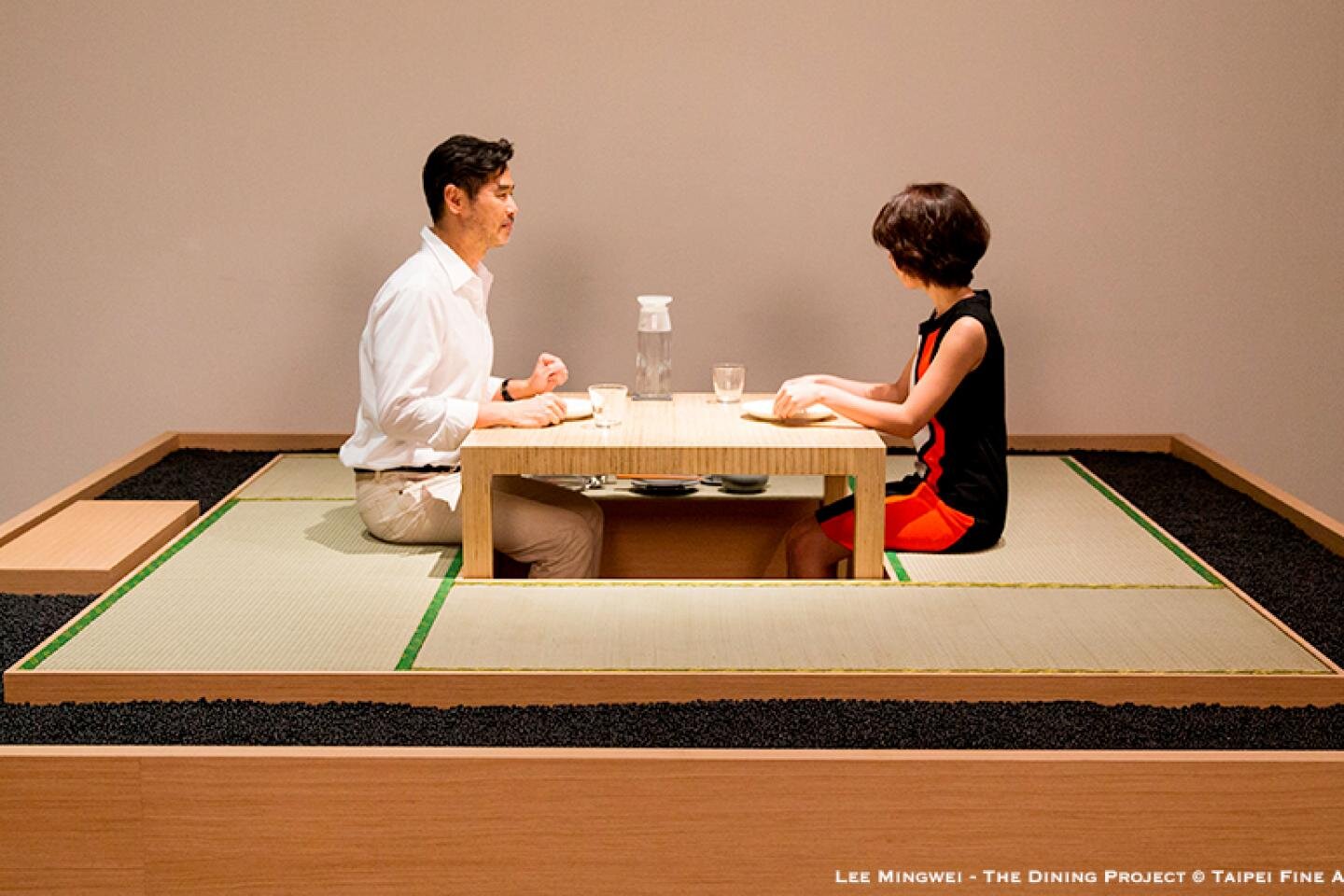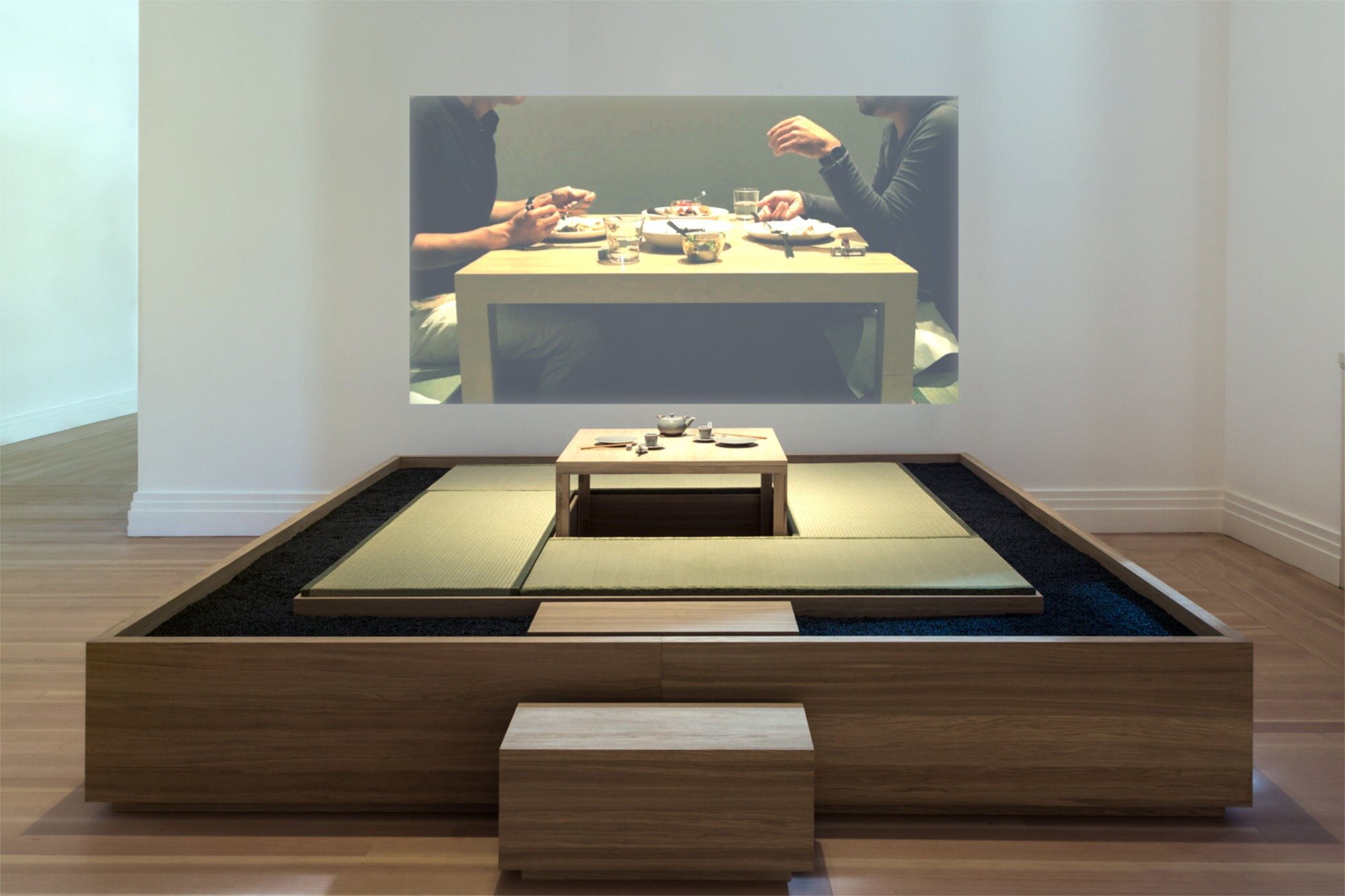SEEDLINGS FOR ALL THE ART you haven’t imagined yet
a collaboratively authored “Permissions” book by the Art Teachers of Winnipeg, Manitoba
Co-written in its entirety on October 24, 2025
To start: A “working definition” for permissions.
PERMISSIONS is a means of looking intently at artworks made, all for the sake of taking on new postures in new artworks and new ways of being as an artist. The simple premise of the PERMISSIONS exercise is that we can learn from the postures of others and from the things they make. This exercise can be done with any type of creative practice, but for today I will be guiding us towards contemporary and conceptual art practices in order to make connections to today’s teaching postures and practices.
Let’s try an example to further establish the idea.
Below you see documentation for a work by the Taiwanese artist Lee Mingwei. It is called The Dinner Project (1997-present). Of course, you can read and learn about this work in order to talk about it with some knowledge of its “truth(s)”, however I’m going to ask that you resist doing that at first and simply try to answer these two questions with guesses:
1- How is this thing made? [this is a question about FORM]
and then ask,
2- What is this thing about? [this is a question about CONTENT]
These are the base questions we ask about almost all artworks, and the answers we come up with—again, regardless of their actuality—will help us to craft permissions that we can use repeatedly in various configurations for as long as we continue to reinterpret our findings (with a certain amount of infidelity to the truth). .
So, let’s say that you determine that “how this piece was made” [ meaning its FORM] was by:
“the artist sets up a very strict rule”
or
“the artist uses a collaborator, could be friend could be a stranger”
or
“the artist works with the materiality of the institution”.
You then determine that “what this work is about” [meaning its CONTENT] is:
“how people relate to art and the artist”
or
“closeness”
or
“the potential ephemerality (or cosmicness) of a mere art gesture”.
Whatever you decide is fine; again, you need not worry about how correct you are in your observations since even your mis-readings will produce results.
***************
Now that you have your ideas about what the form and content might be, formulate those observations into two types of permission-directives, one addressing the form (F) and the other the content (C). Your permission-directives (which are intended to open up the imagination to new possibilities for behavior) might then read like this:
Based on this guess about its form, “the artist sets up a very strict rule”, you might give the permission-directive: Devise tight parameters, and stick to them.
Or based on this guess about its form, “the artist uses a collaborator, could be friend could be a stranger”, you might give the permission-directive: Muster as much generosity as you can, invite others into your work. Be unafraid.
Or, finally, based on this guess about its form, “the artist works with the materiality of the institution, you might give the permission-directive: Consider how the institution is your partner, allow yourself to yield to it.
***************
NOTICE that I underlined the verbs to point out their importance in developing these permission-directives. Our instinct might be to say “create” or “make” when coming up with directions for how art can be enacted, but simply look at how choosing more generous or even mysterious verbs, changes the possibilities of what you might be suggesting for students to do. I could say, “Create tight parameters”, but notice how saying “Devise”, gives it another layer of strategy or planning, that “create” just doesn’t conjure up.
***************
Now those were the permission-directives based on the form analysis, “How is this thing made?”
What might the permission-directives look like through the content analysis, “What is this thing about?”
If your content analysis was that the Lee Mingwei was about “how people relate to art and the artist”, then your permission-directive might be something like: Initiate a project that can only be completed by others. Give others equal credit.
or if you thought the work was about “closeness” , then you might give as a permission-directive: Remember why you value closeness and prioritize this feeling in your gestures.
and finally, if your content analysis made you thinking that the work is about, “the potential ephemerality (or cosmicness) of a mere art gesture”, then you might suggest as a permission directive: Exceed or avoid the limits of time or size, so that what you’ve done is naturally undocumentable or fleeting.
***************
When you have reached this point, now you have your first contribution to the book we are making together. Not the form and content analysis of the Lee Mingwei, but rather the permission-directives which can now be used independently of the source material. Thank you Lee Mingwei, you helped us to get at least two new permissions in art making, and this is where we part ways (for now).
After you have amassed a collection of these permission directives, you can begin to pair them in ways that then generates new ideas. I will show you what I mean by that in a moment, but first let’s talk about what how many of these permission-directives you should make and what we’re going to do with them.
I brought with me more than a 120 issues of ARTFORUM (I’m using this magazine because I happen to have a lot of it, but truly this exercise can be done with any large collection of contemporary art images or things, e.g. in a museum, with a book containing a lot of artists, or even using the internet). So what you do first is saunter. You kinda have to get lost. Wade through the images; just spending time looking at them. When you arrive at an image of an artwork that compels or confuses you, STOP THERE, and then ask the form and content questions. Write down your findings/guesses for the form-content analysis by answering the two questions: How is this thing made? and What is this thing about? [UNDER-INFORMED ANSWERS ONLY].
Once you’ve done the form-content analysis, convert them into permission-directives using the process example I just showed you.
DO THIS FOR SOMETHING BETWEEN 10 and 20 IMAGES (which means you’ll have somewhere between 20 and 40 permission-directives).
I don’t WANT your form-content analysis, but I do want the permission-directives you invented based on that initial exercise. Enter them here:
Now that you have a collection of permission-directives, we can begin to create seedling for future projects (for our students and for ourselves). You may be tempted with this next part, to make some very complete “seedlings”, but what we are looking for is your generosity, and the only true way to get that is to exercise some restraint.
From the repository of permission-directives, begin to create pairings (not pairings that make perfect sense) but rather pairings that pose new problems and create new vibrations in the imagination. Once you have created these juxtapositions, make a brief proposal for how this might be a project or an activity that leads to art making.
Begin your proposal by saying who you imagine might take on this challenge: Is it fourth graders, second year undergraduates, retirees at the community art center? Have a group of people in mind for your project idea.
After that, tell us which two permission-directives you chose to pair with each other.
Suggest artists, things, or processes that might suit your idea and that we could probably look at for further permissions. Remember, don’t be so specific with your suggestion that it closes off our imagination. I want to come back to your idea some day and build on it. I don’t need a prescription, just a set of suggestions.
If you think it’s important suggest one or two mediums that you think would suit this. Say, “Do it as photographs” or “Make it as maps” or “Think about making it with wood”.

